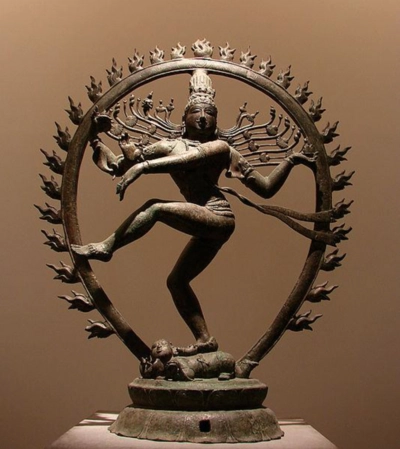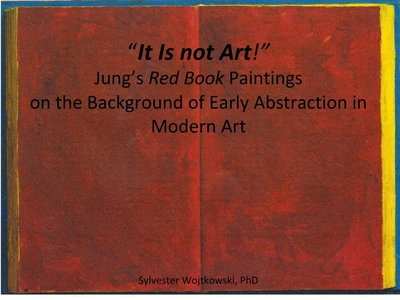ARAS Connections: Image and Archetype - 2019 Issue 3

This edition of ARAS Connections includes two extraordinary contributions from Jungian analysts. The first one is an excerpt from George Elder’s book, The Snake and the Rope: A Jungian View of Hinduism. It is quite amazing that Elder's Chapter 11, "The Divine Dancer” is succinct and expansive at the same time. Shiva as Divine Dancer is both creator and destroyer. Elder writes: "As 'King of Dancers’ Shiva as the paradoxical God is made visible. He is essentially naked as the renouncer of the body’s comfort yet dancing naked as the body’s affirmer.” I hope that the reader will conclude along with me that Elder is quite a dancer himself.
The second contribution is from Sylvester Wojtkowski, a frequent contributor to ARAS Connections. His essays are always highly original, elegantly argued and gorgeously illustrated. “It is not Art! Jung’s Red Book Paintings on the Background of Early Abstraction in Modern Art” is no exception. This is a beautiful paper in every way. Wojtkowski begins his exploration with a stunning juxtaposition of Jung’s paintings from the Red Book with images from the early abstract artists. And it takes almost no imagination to see the remarkable similarities. Jung’s proclamation that his drawings were not art and his distaste for modern art are both taken to task in this stimulating reexamination of Jung’s images themselves as well as his statements about his own images and those of the early abstract painters. Wojtkowski observes: "It seems that both Jung and the early abstract artists were on a similar quest for depiction of the invisible.” It is a rare treat to be able to follow so carefully the emergence of the spiritual in both Jung and the early abstract painters. This paper is already a classic and should be read by every serious student of Jung and every lover of the early abstract painters.
An excerpt from "The Snake and the Rope: A Jungian View of Hinduism"

In 1996, ARAS published a second volume of An Encyclopedia of Archetypal Symbolism on the theme of “The Body.” Its one hundred essays—one chapter per “body part”—were written by George R. Elder. More recently, Dr. Elder, a Jungian analyst, has written a volume on the history of Hinduism from a psychological perspective. It is entitled, The Snake and the Rope: A Jungian View of Hinduism. Here is an excerpt (slightly altered for this purpose) from chapter eleven where the many sides—and many images—of the Hindu God Shiva are explored.
Among all the extraordinary images of Shiva, the most famous is that of Nataraja, “King of Dancers.”
We see here an example from the Chola dynasty of South India (900-1300 CE) which patronized Shaivite religion and was responsible not only for great new temples with their stone sculptures but also for portable metal images like this bronze. It would have been carried in procession for darshan or “seeing” of the Sacred. It is also likely that a bit of tiger skin draped the image (deities are often ritually clothed for worship) while the God does wear a metallic snake around his shoulders. He stands on the yaksha dwarf Apasmara, the demi-god of “Forgetfulness,” whom we met at Gudimullam. Together, these elements allude to a myth of the God’s vanquishing the “three miseries” of maya (“illusion,” a tiger), karma (“transmigration,” the snake), and avidya (“ignorance,” symbolized by the dwarf). It was then that the Lord danced a dance of victory.
But we already watched him dance untamed lust in the Pine Forest; and in courtship he danced before Parvati on the mountain. At the junctures of the great cycles of existence, he is known to dance Destruction and Creation. In fact, the Lord himself declares in the Kurma Purana: “I, the Yogin, dance on forever” (2.4.33). Shiva, therefore, is not only archetypal Pillar, Phallus, and Androgyne—he is also the archetypal Dancer.
Read An excerpt from "The Snake and the Rope: A Jungian View of Hinduism" in its entirety here.
"It is not Art!" Jung's Red Book Paintings on the Background of Early Abstraction in Modern Art

That which belongs to the spirit of the future can only be realized in feeling, and to this feeling the talent of the artist is the only road. Wassily Kandinsky, Concerning The Spiritual In Art (1913),12
Therein lies the social significance of art: it is constantly at work educating the spirit of the age, conjuring up the forms in which the age is most lacking. C. G. Jung, CW 15, p. 82
I can understand modern works of art only as idols from the underworld, and they become accessible to me only through a knowledge of the psychology of the unconscious. They do not affect me aesthetically. It may very well be that my attitude is that of a Philistine, but God knows I can't find them beautiful. Perhaps other centuries will, in which case I am thankful to the Creator that man doesn't live for 200 years, otherwise he would suddenly find himself in an age in which he would choke to death. C.G. Jung’s Letter to Hans Welti 12/23/1932, L1
We can therefore attribute to modern art a conscious or unconscious intention to turn the beholder's eyes away from the intelligible and enjoyable world of the senses and to enforce a revelation of the unconscious as a kind of substitute for the loss of human surroundings. C.G.Jung, CW10 ¶ 754
Contemplation of an abstract painting always starts me off on the following train of thought: it is not an object of experience in the outer world, nor is it meant to be. If nevertheless there are hints of something recognizable, this is an unintentional lapse or an unavoidable concession to the understanding of the beholder, or to a desire to communicate. 10/21/60 C.G. Jung’s Letter to the Swiss Painter Rene A. Kipfer, L2, 604-5
IT IS NOT ART
In the first part of this paper I will present a visual amplification of Jung’s Red Book paintings, juxtaposing them with works of modern abstract art. I ask the reader/viewer to make his/her own judgment of how similar or different are his works from the representative works of abstract artists, his contemporaries, and draw their own conclusions.
In the second part I will discuss Jung’s attitude towards modern art.
In the third part I will present a selection from the artwork and writings of spiritual abstract artists that reflect on their understanding of their work. Their elucidation of their process resonates with Jung’s understanding of the psyche.
Contents
Become a Member of ARAS!
Become a member of ARAS Online and you'll receive free, unlimited use of the entire archive of 17,000 images and 20,000 pages of commentary any time you wish—at home, in your office, or wherever you take your computer.
The entire contents of three magnificent ARAS books: An Encyclopedia of Archetypal Symbolism, The Body and The Book of Symbols are included in the archive. These books cost $330 when purchased on their own.
You can join ARAS Online instantly and search the archive immediately. If you have questions, please call (212) 697-3480 or email info@aras.org
We Value Your Ideas
As our newsletter grows to cover both the ARAS archive and the broad world of art and psyche, we're eager to have your suggestions and thoughts on how to improve it. Please send your comments to info@aras.org. We look forward to your input and will reply to every message.
Subscribe
If you're not already a subscriber and would like to receive subsequent issues of this newsletter by email at no cost, e-mail us at newsletter@aras.org.
